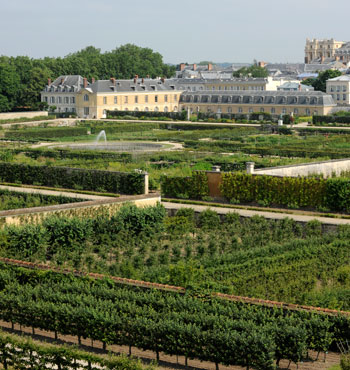If you follow my bicycling blog, brightmeadowbicycle.blogspot.com, you know that I am doing a series "Grand Tour of Ohio on Bicycle" where I visit cities in Ohio that are named after European cities.
This week I rode a loop starting in Strasburg, Ohio. The town was settled by German immigrants and may have been named after Strasburg, Germany, although there is also a chance it was named after Strasbourg, France, which is a much larger city on the border with Germany.
Agriculture and Wildlife preservation - there and here
In researching Strasburg, Germany, I found a link to the Deutsche Wildtier gut Klepelshagen. This is a model farm run by the German Wildlife Federation that intends to demonstrate that wildlife preservation can co-exist with agriculture, and can be economically feasible.
The sustainable practices that are followed there are late mowing, high mowing, and limited mowing on a daily basis, so that disturbed wildlife can find new homes. Wide strips of non-cultivated land are left among the grazing organic German Angus beef cattle. They are managing the forests and woods by leaving fallen trees to rot and provide wildlife habitat, and managing the predator species by allowing sustainable hunting.
"The German Wildlife Foundation manages almost 700 hectares of grassland as part of organic farming, which is expanded with additional requirements such as a late mowing date. The areas are mainly located in Fintel (Lower Saxony) and Klepelshagen (Mecklenburg-Western Pomerania) and are grazed with cattle or mowed for hay and silage use. Economic and ecological goals are linked to one another on these areas. The German Wildlife Foundation has received around 300 hectares of grassland from the federal government as part of the national natural heritage. The aim here is exclusively nature and species protection. The areas are mostly tended by organic farmers in terms of nature conservation. This benefits a variety of species: from the brown hare and the skylark to wild bees and butterflies. The areas are often characterized by special natural conditions, such as nutrient poverty (poor meadows) or high humidity (wet meadows). In addition, the German Wildlife Foundation has already converted arable land back into grassland at individual locations." - from the website.
Near Strasburg, Ohio, just outside of Dover, the Tuscarawas county Soil and Water Conservation organization runs the Norma Johnson Center, which is a wildlife preserve that offers opportunities to birders, naturalists, hikers and fishermen. Notably, bicycles are not allowed on the trails. The preserve is located on Ohio State Route 39. I am only a few miles away from this highway, I presume I could follow it all the way east to Dover.
"As a young adult, Norma Johnson saw the beauty and impact of natural areas for all to enjoy. While farming and learning she realized that as the years go on highways and people would swell into the Brandywine Valley. She saw the need that “acres of trees, ponds, and wildlife would be most refreshing for people to wander over now and in the future”. With this vision and the efforts of the community the 303 acre Norma Johnson Center Conservation Center and Nature Preserve came to be for now and future generations."
Cuisine
Both Strasburgs, the German one, and the Ohio one, share a similar cuisine. The Ohio region was settled by German immigrants and they brought their food heritage with them. There is one difference, the German village is not too far from the Baltic Sea, so favorite saltwater seafood items like pickled herring and eel are not as common in Ohio, although freshwater fish are widely available in lakes and rivers.
The website German Food Guide has this to say:
The cuisine in Mecklenburg-Western Pomerania (Mecklenburg Vorpommen) is rich and hearty. Meat is used abundantly, as well as bacon and butter. Ham and wurst also play an important role in the cuisine here. Plums, pears, raisins, and apples are used as seasonings and side dishes for roasts.
Given the state's large amount of water from its lakes, rivers, and coastline, fish plays a large role in the cuisine. In the coastal regions, herring, mackerel, and flounder are the favorites, while perch, walleye, trout, and eel are the favorites inland.
The state's large forest areas provide its cuisine with a variety of game. Among the favorites are venison and wild boar.
A real Mecklenburg meal always includes potatoes, which is the favorite side dish here. Rice, dumplings, and noodles are usually only made from a package and then only when there is little time to prepare a "real" meal. But the locals would take pan fried potatoes made with bacon over these other side dishes in a heartbeat.
Other important vegetables here include kale, cabbage, beets, mushrooms, and beans.
On her website, Oma Gerhild mentions several favorite foods from Mecklenberg-Vorpommern.
"Fish is popular, especially carp (Karpfen), eel (Aal), flounder (Flunder), pike (Hecht), bream (Brasse), roach (Rotauge), tench (Schleie), trout (Forelle), and salmonide (a type of German trout).
Cabbage (Kohl/Kraut)
Turnips (Rüben) and beets (Rote Rüben) used in salads, soups, and stews. The juices are used to make syrups and sweeteners.
Geese (Gänse) considered the best of poultry with apples, prunes, and bread stuffing.
Hotchpotch a meat, turnip, carrot, and cabbage
Eintopf ("onepot")
Tollatsch a sweet black pudding made with pig's blood, raisins, and sugar. Of Swedish origin, it is eaten sliced, fried, and sprinkled with sugar."
And the website Germanfoods.org lists other favorites.
Mecklenburg-Vorpommern (Mecklenburg-West Pommerania) is Germany’s most agrarian state with an abundance of farms producing dairy products, fruits and vegetables, fish and cereals.
Aal in Dillsosse (Eel in a Dill Sauce) -A common dish from the Mecklenburg-Vorpommern region of Germany with marinated eel.
Gebratener Hornhechte (Fried Horn Fish) -This fried dish is one of many welcoming summer to the Ostsee coast.
Klopfschinken (Breaded Ham)-Crispy breaded ham is a favorite in the northeastern region of Germany.
Labskaus (Corned Beef, Potatoes, and Onions)- A traditional meal that is simple, yet sophisticated.
Marinated Fried Herring -A perfect Fish-Fry-Friday dish!
Mecklenburger Fischsuppe (Fish Soup)-Greatly paired with dark bread and a beer!
Rote Grütze-A summer dessert with delicious berries. Top with whipped cream or serve over ice cream for extra sweetness.
Sanddorn-Mandel-Kuchen (Sea Buckthorn Berry-Almond Cake)- A sweet orange marmalade glaze completes this cake.
Schweinebraten gefüllt mit Backpflaumen (Roasted Pork with Prunes)-The sweet and sour flavor typical to Mecklenburg-Vorpommern is show-cased in this heavenly dish.
Königsberger Klopse (Kaliningrad Meatballs)
Räucherfischbrötchen
Geräucherter Lachs mit Forellenfilets
Deutscher Käsekuchen
I found "arme ritter" listed on Wikipedia's page about Mecklenberg cuisine. Since my maiden name was Ritter, I wondered what this food was. Translated literally, it means "poor knight". The wikipedia article links to an article on French toast, fried bread slices dipped in egg! Evidently that is what poor knights ate!
%3B_Claude_Gell%C3%A9e%2C_called_Le_Lorrain.jpg)






















